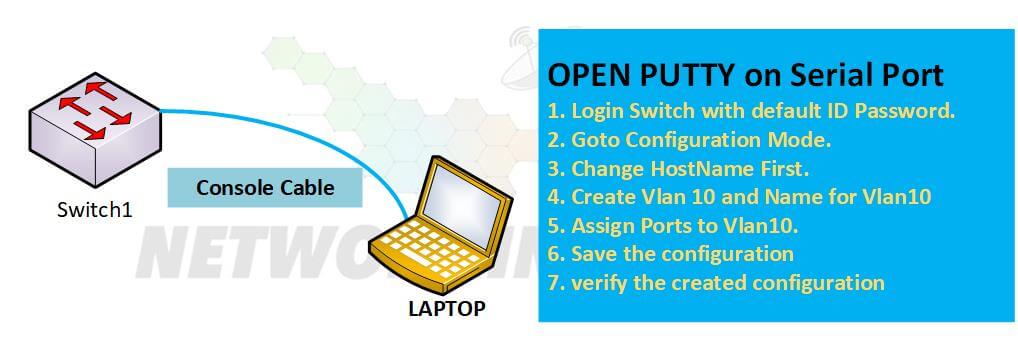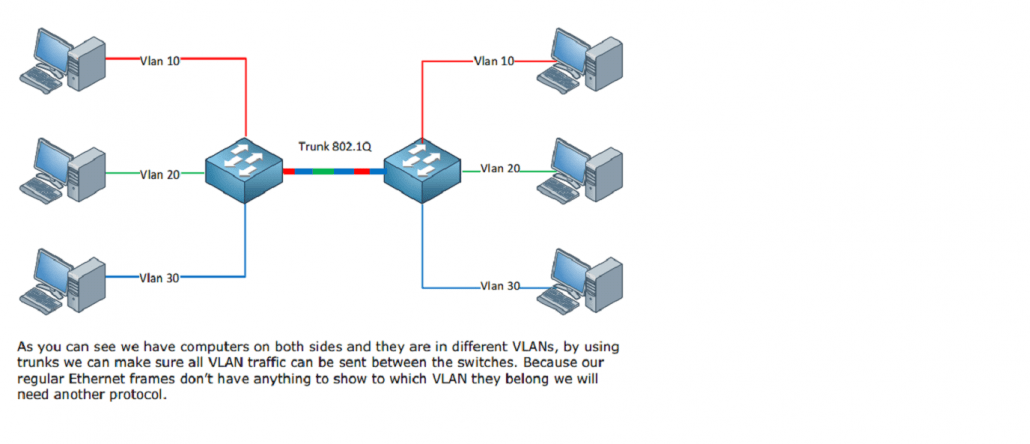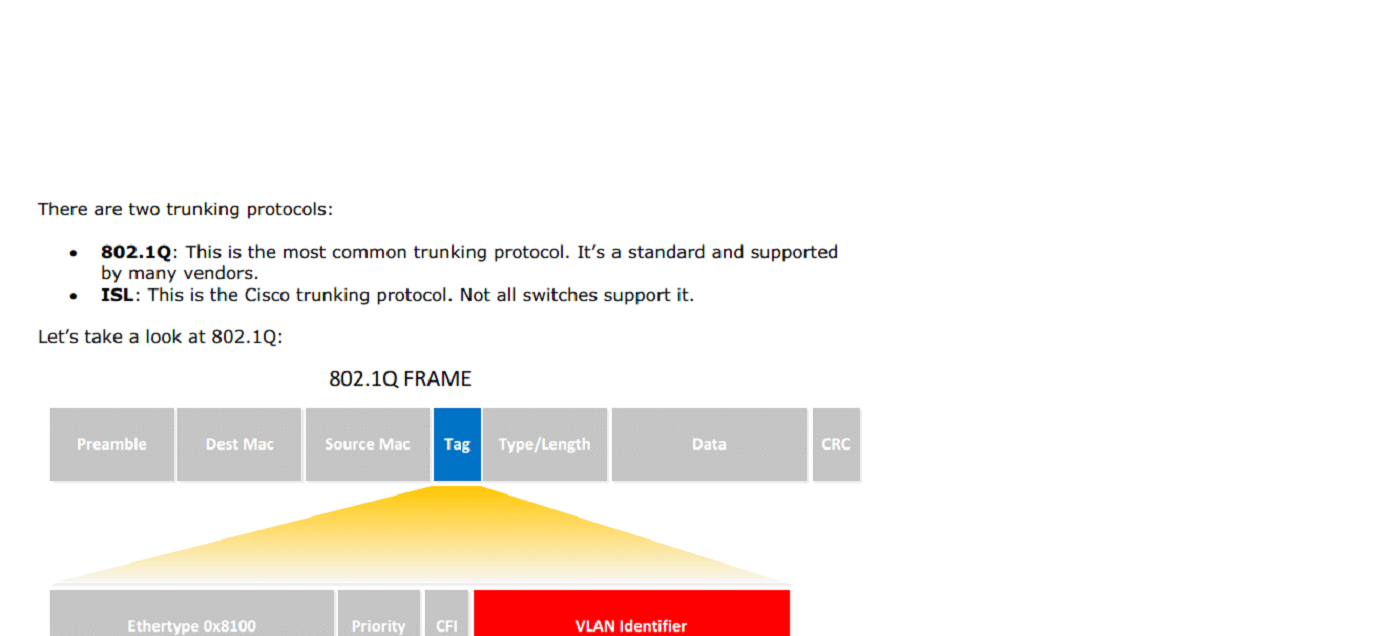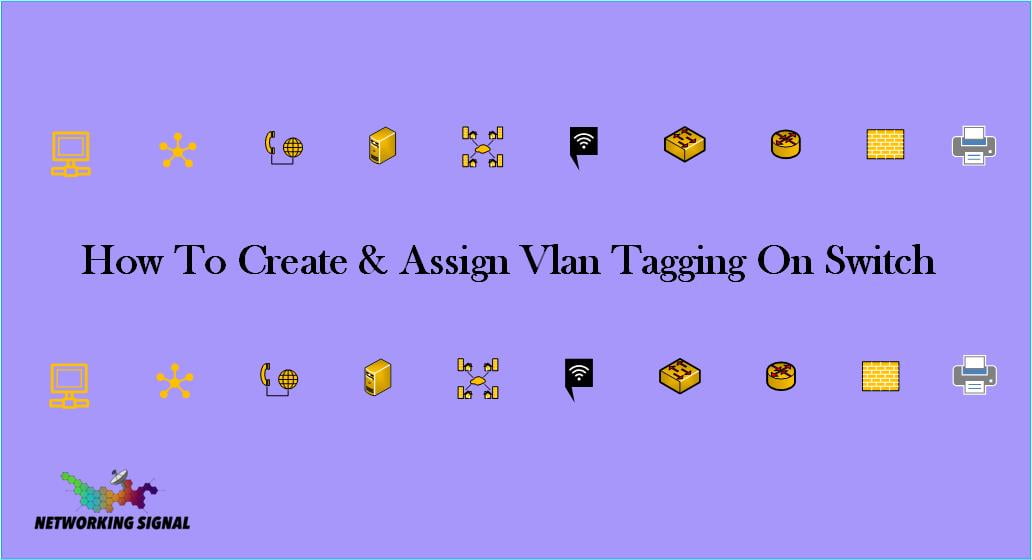VLAN Tagging is used when a link needs to carry traffic for more than one VLAN. VLAN ( virtual local area network) is logically or simply a group of network devices. When we create a VLAN tagging on a switch, then we actually break a broadcast domain or we can say a VLAN breaks the broadcast domain at layer2 we use VLAN and one VLAN defines one broadcast domain.
That is the simple description of VLAN but this is not simple in a real scenario network. It is very uses full in the big network as well as a small network. Without VLAN technology a big network can’t be handled. Now I telling you about the feature, advantages, and uses of Vlan.
The advantage of VLAN Tagging:
- VLAN solves the Broadcast Problem.
- Reduce the size of the broadcast domain.
- VLAN allows us to add an additional layer of security.
- With the VLAN easy to manage device management.
- VLAN allows us to implement the logical grouping of the device by function instead of location.
The feature of VLAN Tagging:
- To break the broadcast domain at layer2 we use VLAN and one VLAN defines one broadcast domain
- VLAN identify by a number and it is in 12bits
- range of VLAN from 0 to 4095 (normal= 1 to 1005, extended=1006 to 4094)
- default VLAN is vlan1 ( also called Native VLAN)
- VLAN database saves in vlan.dat file in flash memory. How to create
How to create VLAN on Switch: commands

- switch(config)#vlan 10
- switch(config-VLAN)#name sales
- switch#show VLAN brief
How to assign a port to any VLAN: commands

- static VLAN assign:
- switch(config-if)# switch port access VLAN 10
- switch#show VLAN brief
- switch#show VLAN id 10
By this can understand the normally behave of VLAN and how they configure and work. You are the networking guys or technically guys so, you know that on switch neighbor a device is always there like PC, Router, Switch & WiFi, etc. In between there is a link, here that links also a big role. A link is two types of Access links or Trunk links.
What is VLAN Trunking Protocol: Read Now
A switch has compatibility to do layer2 address switching.
Access port– carries single VLAN data
Trunk port – carries multiple VLAN data
The trunk link uses the trunk encapsulation protocol, this protocol has two types.
- ISL
- Dot.1q
ISL
- Cisco proprietary protocol
- It adds extra 30-byte info in the existing Ethernet header. 26-byte ISL header & 4-byte ISL trailer.
- Does not support untagged traffic
- Does not support Native VLAN
- MTU- 1530 byte
DOT.1Q
- Open Standard
- It adds 4-byte info in the existing Ethernet header
- It supports untagged traffic.
- supports Native VLAN.
- MTU- 1504 byte

VLAN Tagging:
You can see in the below picture, there is 3 VLAN available VLAN10, VLAN20, and VLAN30. Between two switches a TRUNK link is used, we know that a trunk link can pass different VLAN with dot.1q encapsulation.

Here we show you VLAN1o with Red Colour, VLAN20 with Green Colour & VLAN30 with Blue Colour. According to the above picture, you can easily understand VLAN tagging.
When VLAN sends a message then the Trunk link is tagged with VLAN10 (red color only for understanding) other side trunk link remove Tagged and switches the message to VLAN10 ports. Same as other VLAN data proceed with tagging and remove tagging. VLAN Tagging is used when a single link needs to carry traffic for more than one VLAN


1 thought on “How To Create & Assign Vlan Tagging On Switch”